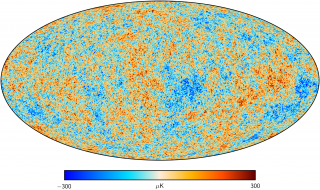Bibcode
Planck Collaboration; Ade, P. A. R.; Aghanim, N.; Alves, M. I. R.; Armitage-Caplan, C.; Arnaud, M.; Ashdown, M.; Atrio-Barandela, F.; Aumont, J.; Baccigalupi, C.; Banday, A. J.; Barreiro, R. B.; Bartlett, J. G.; Battaner, E.; Benabed, K.; Benoît, A.; Benoit-Lévy, A.; Bernard, J.-P.; Bersanelli, M.; Bielewicz, P.; Bobin, J.; Bock, J. J.; Bonaldi, A.; Bond, J. R.; Borrill, J.; Bouchet, F. R.; Boulanger, F.; Bridges, M.; Bucher, M.; Burigana, C.; Butler, R. C.; Cardoso, J.-F.; Catalano, A.; Chamballu, A.; Chary, R.-R.; Chen, X.; Chiang, H. C.; Chiang, L.-Y.; Christensen, P. R.; Church, S.; Clements, D. L.; Colombi, S.; Colombo, L. P. L.; Combet, C.; Couchot, F.; Coulais, A.; Crill, B. P.; Curto, A.; Cuttaia, F.; Danese, L.; Davies, R. D.; de Bernardis, P.; de Rosa, A.; de Zotti, G.; Delabrouille, J.; Delouis, J.-M.; Dempsey, J. T.; Désert, F.-X.; Dickinson, C.; Diego, J. M.; Dole, H.; Donzelli, S.; Doré, O.; Douspis, M.; Dupac, X.; Efstathiou, G.; Enßlin, T. A.; Eriksen, H. K.; Falgarone, E.; Finelli, F.; Forni, O.; Frailis, M.; Franceschi, E.; Fukui, Y.; Galeotta, S.; Ganga, K.; Giard, M.; Giraud-Héraud, Y.; González-Nuevo, J.; Górski, K. M.; Gratton, S.; Gregorio, A.; Gruppuso, A.; Handa, T.; Hansen, F. K.; Hanson, D.; Harrison, D.; Henrot-Versillé, S.; Hernández-Monteagudo, C.; Herranz, D.; Hildebrandt, S. R.; Hily-Blant, P.; Hivon, E.; Hobson, M.; Holmes, W. A.; Hornstrup, A.; Hovest, W.; Huffenberger, K. M.; Hurier, G.; Jaffe, A. H. et al.
Bibliographical reference
Astronomy and Astrophysics, Volume 571, id.A13, 22 pp.
Advertised on:
11
2014
Journal
Citations
195
Refereed citations
178
Description
Rotational transition lines of CO play a major role in molecular radio
astronomy as a mass tracer and in particular in the study of star
formation and Galactic structure. Although a wealth of data exists for
the Galactic plane and some well-known molecular clouds, there is no
available high sensitivity all-sky survey of CO emission to date. Such
all-sky surveys can be constructed using the Planck HFI data because the
three lowest CO rotational transition lines at 115, 230 and 345 GHz
significantly contribute to the signal of the 100, 217 and 353 GHz HFI
channels, respectively. Two different component separation methods are
used to extract the CO maps from Planck HFI data. The maps obtained are
then compared to one another and to existing external CO surveys. From
these quality checks the best CO maps, in terms of signal to noise ratio
and/or residual contamination by other emission, are selected. Three
different sets of velocity-integrated CO emission maps are produced with
different trade-offs between signal-to-noise, angular resolution, and
reliability. Maps for the CO J = 1 → 0, J = 2 → 1, and J = 3
→ 2 rotational transitions are presented and described in detail.
They are shown to be fully compatible with previous surveys of parts of
the Galactic plane as well as with undersampled surveys of the high
latitude sky. The Planck HFI velocity-integrated CO maps for the J = 1
→ 0, J = 2 → 1, and J = 3 →2 rotational transitions
provide an unprecedented all-sky CO view of the Galaxy. These maps are
also of great interest to monitor potential CO contamination of the
Planck studies of the cosmological microwave background.
Related projects

Anisotropy of the Cosmic Microwave Background
The general goal of this project is to determine and characterize the spatial and spectral variations in the temperature and polarisation of the Cosmic Microwave Background in angular scales from several arcminutes to several degrees. The primordial matter density fluctuations which originated the structure in the matter distribution of the present
Rafael
Rebolo López